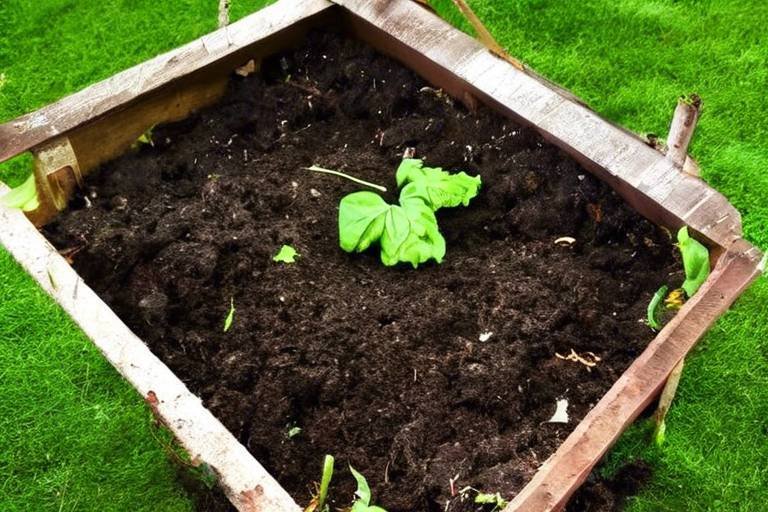How to Create a Green Home Renovation Plan
Renovating your home with sustainability in mind is more than just a trend—it's a crucial step towards reducing our environmental impact and creating a healthier living space for ourselves and future generations. When embarking on a green home renovation journey, it's essential to have a well-thought-out plan that encompasses various aspects of sustainability, from energy efficiency to water conservation and indoor air quality.
Creating a green home renovation plan starts with assessing your current living space to understand its energy usage, water consumption, and overall environmental footprint. By identifying areas that need improvement, you can set specific sustainability goals for your renovation project. These goals may include reducing energy consumption, minimizing waste, and incorporating eco-friendly materials into your home.
One of the key aspects of a green renovation plan is the choice of materials. Opting for eco-friendly options such as recycled wood, bamboo flooring, low-VOC paints, and energy-efficient appliances can significantly reduce your home's carbon footprint. Additionally, considering energy-efficient upgrades like solar panels, smart thermostats, and LED lighting can help lower your utility bills and decrease overall energy consumption.
Water conservation is another critical component of a green home renovation plan. By integrating water-saving fixtures, rainwater harvesting systems, and drought-resistant landscaping, you can minimize water usage and promote sustainable water management in your home. Improving indoor air quality is equally important, achieved through natural ventilation, air purifiers, and non-toxic building materials to create a healthy living environment for you and your family.
Developing a waste management strategy is essential during the renovation process to reduce construction waste, recycle materials, and ensure proper disposal of hazardous substances. Exploring green building certifications like LEED or Energy Star, as well as potential tax incentives and rebates for eco-friendly renovations, can further maximize the sustainability benefits of your project.
Finally, maintaining your green home is crucial for long-term sustainability. Establishing a maintenance plan that includes regular inspections, energy audits, and eco-friendly practices will help ensure that your home continues to operate efficiently and sustainably over time. By following these steps and incorporating green practices into your renovation plan, you can create a home that not only benefits the environment but also enhances your quality of life.

Assessing Your Current Home
When embarking on a green home renovation journey, the first crucial step is to assess your current home thoroughly. This assessment involves delving into various aspects of your home to identify areas that can be improved to make your living space more sustainable and eco-friendly.
One key element to evaluate is your home's energy usage. Check for energy inefficiencies such as old appliances, inadequate insulation, or drafty windows that may be contributing to high energy consumption. Understanding your energy usage patterns can help you determine where upgrades or changes are needed to reduce your environmental impact.
Water consumption is another vital factor to consider during the assessment. Look for leaks, inefficient fixtures, and excessive water usage habits that can be addressed to promote water conservation in your home. Implementing water-saving strategies can significantly reduce your household's water footprint and contribute to a more sustainable lifestyle.
Additionally, assess the overall environmental impact of your home by examining waste generation, indoor air quality, and the use of harmful chemicals in cleaning products or building materials. Identifying areas where improvements can be made in these aspects will guide you in creating a comprehensive green renovation plan that prioritizes sustainability.

Setting Sustainable Goals
When embarking on a green home renovation project, setting sustainable goals is a pivotal step towards creating an eco-friendly living space. By defining clear objectives for your renovation, you can steer the project towards maximizing environmental benefits and energy efficiency.
One key aspect of setting sustainable goals is to focus on reducing energy consumption. This can involve upgrading to energy-efficient appliances, improving insulation, and integrating renewable energy sources like solar panels into your home. By lowering your energy usage, you not only decrease your carbon footprint but also save on utility costs in the long run.
Another crucial goal to consider is minimizing waste throughout the renovation process. This includes properly recycling materials, repurposing existing fixtures, and choosing products with minimal packaging. By prioritizing waste reduction, you contribute to a more sustainable construction industry and lessen the burden on landfills.
Additionally, utilizing eco-friendly materials should be a core goal in your green renovation plan. Opt for sustainable building materials such as bamboo flooring, reclaimed wood, and low-VOC paints to minimize harmful emissions and promote a healthier indoor environment. These choices not only benefit the planet but also enhance the overall aesthetics of your home.
Setting sustainable goals is not just about improving your living space; it's about making a positive impact on the environment and future generations. By aligning your renovation objectives with sustainability principles, you can create a home that not only reflects your values but also contributes to a greener, more resilient world.

Choosing Eco-Friendly Materials
When it comes to creating a green home renovation plan, one of the most crucial aspects is choosing eco-friendly materials. These materials play a significant role in reducing your home's carbon footprint and promoting sustainability. By opting for sustainable building materials, you not only contribute to environmental conservation but also create a healthier living space for you and your family.
There are various options available when it comes to eco-friendly materials for your renovation project. Recycled wood is an excellent choice for flooring and furniture, as it reduces the demand for new timber and helps in waste reduction. Bamboo flooring is another popular option known for its sustainability and durability, making it a great alternative to traditional hardwood floors.
When it comes to painting your home, consider using low-VOC (volatile organic compounds) paints. These paints have lower levels of harmful chemicals compared to conventional paints, improving indoor air quality and reducing health risks. Additionally, energy-efficient appliances are essential for a green home renovation, as they consume less energy and contribute to long-term savings on utility bills.
Exploring sustainable building materials can be an exciting journey, as you discover innovative products that are both environmentally friendly and aesthetically pleasing. From energy-efficient windows to eco-friendly insulation materials, there are numerous options to choose from to enhance the sustainability of your home renovation project.

Energy-Efficient Upgrades
When it comes to making your home more eco-friendly and energy-efficient, incorporating is a key component of a green renovation plan. By implementing various energy-saving technologies and practices, you can significantly reduce your home's energy consumption and lower utility bills while minimizing your environmental impact.
One of the most popular energy-efficient upgrades is the installation of solar panels. Harnessing the power of the sun, solar panels generate clean and renewable energy to power your home, reducing your reliance on traditional electricity sources. While the initial investment may seem significant, the long-term savings and environmental benefits make solar panels a worthwhile addition to any green home renovation plan.
Another essential energy-efficient upgrade is investing in energy-efficient windows. These windows are designed to minimize heat transfer, keeping your home cool in the summer and warm in the winter without relying heavily on heating or cooling systems. By improving insulation and reducing air leakage, energy-efficient windows help maintain a comfortable indoor temperature while reducing energy consumption.
Integrating smart thermostats into your home is also a smart energy-efficient upgrade. These devices allow you to regulate your home's temperature more efficiently by automatically adjusting settings based on your schedule and preferences. By optimizing heating and cooling patterns, smart thermostats help reduce energy waste and lower heating and cooling costs.
Additionally, LED lighting is a simple yet effective energy-efficient upgrade that can make a significant impact on your home's energy consumption. LED bulbs use up to 80% less energy than traditional incandescent bulbs and have a much longer lifespan, making them a cost-effective and environmentally friendly lighting choice for your green home renovation.

Water Conservation Strategies
When it comes to creating a green home renovation plan, water conservation plays a crucial role in reducing your environmental impact. Implementing effective water-saving strategies not only helps preserve this precious resource but also contributes to a more sustainable living environment for you and your family.
One of the key water conservation strategies is the incorporation of water-saving fixtures throughout your home. Installing low-flow toilets, faucets, and showerheads can significantly reduce water usage without compromising on performance. These fixtures are designed to maintain water pressure while consuming less water, making them an efficient choice for your green home renovation.
Another effective method to minimize water consumption is the implementation of rainwater harvesting systems. By collecting rainwater from your roof and storing it for later use in irrigation or household activities, you can reduce your reliance on municipal water sources. This not only conserves water but also helps lower your utility bills in the long run.
In addition to water-saving fixtures and rainwater harvesting, incorporating drought-resistant landscaping can further enhance your water conservation efforts. Opt for native plants that require minimal watering and maintenance, reducing the need for irrigation. Mulching around plants and trees can also help retain soil moisture, promoting water efficiency in your outdoor spaces.
By combining these water conservation strategies in your green home renovation plan, you can create a more sustainable and eco-friendly living space that prioritizes efficient water usage and environmental responsibility.

Indoor Air Quality Improvement
Improving indoor air quality is a vital aspect of creating a green home through renovation. By focusing on enhancing the air you breathe indoors, you can significantly impact your overall health and well-being. One effective way to achieve this is by incorporating natural ventilation systems into your home design. These systems allow for the circulation of fresh air, reducing the buildup of pollutants and ensuring a constant flow of clean air.
Additionally, using air purifiers can further enhance the air quality in your home by filtering out harmful particles and allergens. Investing in high-quality air purifiers with HEPA filters can effectively remove pollutants, dust, and other contaminants, providing you with a healthier indoor environment. Moreover, opting for non-toxic building materials during your renovation can significantly reduce the presence of harmful chemicals and volatile organic compounds (VOCs) in your home.
Creating a green home renovation plan that prioritizes indoor air quality improvement involves careful consideration of the materials and systems you integrate into your living space. By choosing natural ventilation, air purifiers, and non-toxic materials, you can ensure that the air you breathe is clean and free of harmful substances, promoting a healthier lifestyle for you and your family.

Waste Management Plan
When embarking on a green home renovation journey, one crucial aspect that cannot be overlooked is the Waste Management Plan. This plan is essential in ensuring that the renovation process is not only environmentally friendly but also sustainable in the long run. By developing a comprehensive waste management strategy, you can significantly reduce the environmental impact of your project and contribute to a healthier planet.
One key component of the Waste Management Plan is the proper handling of construction waste. This involves sorting materials on-site, recycling as much as possible, and disposing of any remaining waste responsibly. By diverting construction debris from landfills, you can minimize the overall environmental footprint of your renovation.
Additionally, incorporating recycled materials into your renovation can further enhance the sustainability of your project. Using reclaimed wood, recycled glass countertops, or repurposed fixtures not only reduces the demand for new resources but also adds a unique and eco-friendly touch to your home.
Furthermore, it is essential to address the disposal of hazardous substances during the renovation process. Properly handling materials such as paint, solvents, and asbestos is crucial for both environmental protection and human health. By following regulations and guidelines for hazardous waste disposal, you can ensure a safe and sustainable renovation experience.
Creating a Waste Management Plan also involves considering the lifecycle of materials used in the renovation. Choosing durable and long-lasting products can help reduce the need for frequent replacements, thus decreasing overall waste generation over time. Additionally, selecting materials that are easily recyclable or biodegradable can further enhance the eco-friendliness of your home.
By implementing a well-thought-out Waste Management Plan, you not only contribute to a greener environment but also set a positive example for sustainable living. Remember, every small step towards reducing waste and promoting recycling counts towards creating a more sustainable future for generations to come.

Green Certifications and Incentives
When it comes to creating a green home renovation plan, considering green certifications and incentives can significantly enhance the sustainability of your project. Green building certifications, such as LEED (Leadership in Energy and Environmental Design) or Energy Star, provide validation of your home's eco-friendly features and practices. These certifications not only demonstrate your commitment to environmental responsibility but also increase the value of your property.
Moreover, pursuing green certifications can open up opportunities for various incentives and rebates. Many local and state governments offer financial incentives for homeowners who undertake eco-friendly renovations. These incentives can come in the form of tax credits, rebates, or grants, helping offset the initial costs of sustainable upgrades.
By achieving green certifications and taking advantage of incentives, you not only contribute to a more sustainable future but also enjoy potential cost savings and added benefits for your green home renovation project.

Maintaining Your Green Home
Once you have completed your green home renovation, it is essential to establish a comprehensive maintenance plan to ensure the long-term sustainability of your eco-friendly living space. Regular maintenance not only preserves the efficiency of your green upgrades but also helps in continuing to reduce your environmental impact over time.
One crucial aspect of maintaining your green home is to conduct regular inspections to identify any issues that may arise. By proactively addressing potential problems, you can prevent larger issues from occurring and maintain the optimal performance of your eco-friendly systems.
Additionally, scheduling periodic energy audits can help you monitor your home's energy consumption and identify areas where further improvements can be made. Understanding how your home uses energy allows you to adjust your habits and make informed decisions to enhance energy efficiency.
Implementing eco-friendly practices in your daily routines is another key component of maintaining a green home. Simple habits such as turning off lights when not in use, using energy-efficient appliances wisely, and reducing water waste contribute to the overall sustainability of your living environment.
Creating a maintenance calendar can help you stay organized and ensure that necessary tasks are completed on time. Whether it's changing air filters, inspecting insulation, or servicing your HVAC system, a structured schedule keeps your green home running smoothly.
Furthermore, staying informed about advancements in sustainable technology and practices allows you to continuously improve the eco-friendliness of your home. By keeping up to date with innovations, you can upgrade your systems when needed and stay ahead in your sustainability efforts.
Remember, maintaining a green home is an ongoing commitment that requires dedication and mindfulness. By incorporating these maintenance practices into your routine, you can enjoy a comfortable, energy-efficient, and environmentally friendly living space for years to come.
Frequently Asked Questions
- What are the benefits of creating a green home renovation plan?
Creating a green home renovation plan offers numerous benefits, including reduced energy consumption, lower utility bills, improved indoor air quality, and a smaller environmental footprint. By using eco-friendly materials and energy-efficient upgrades, you can contribute to a healthier living environment for yourself and future generations.
- How can I assess my home's current environmental impact?
You can assess your home's current environmental impact by evaluating your energy usage, water consumption, and waste generation. Conducting an energy audit, inspecting water fixtures, and analyzing your waste production can help identify areas for improvement and guide your green renovation plan.
- What eco-friendly materials can I use for my green home renovation?
There are various eco-friendly materials you can use for your green home renovation, such as recycled wood, bamboo flooring, low-VOC paints, and energy-efficient appliances. These materials not only reduce your home's carbon footprint but also promote sustainable living practices and support a healthier planet.
- Are there any certifications or incentives available for green home renovations?
Yes, you can explore certifications like LEED or Energy Star for green building projects, which can help validate the sustainability of your renovation efforts. Additionally, there are often tax incentives and rebates available for eco-friendly home improvements, providing financial benefits for your green renovation initiatives.



















